26th August, 2025
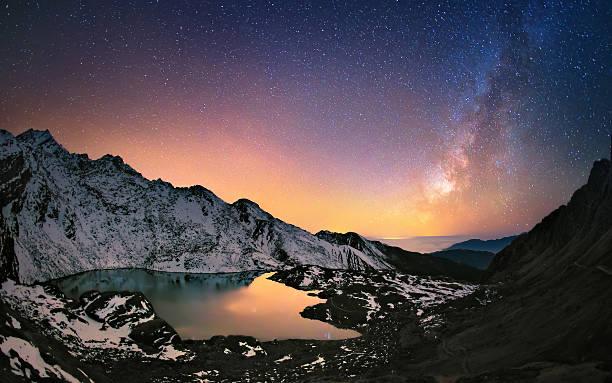
Jul 29, 2024
Best Time for Langtang Valley Trek
- Langtang Valley Trek: Best Time to Explore the Himalayan Beauty
- Overview of Langtang Valley Trek
- Weather and Climate in Langtang Valley
- Choosing the Best Time
- Best Seasons for Langtang Valley Trek
- Trekking to Langtang Valley in Spring (March to May)
- Langtang Valley Trek During Autumn (September to November)
- Off-Season Trekking in Langtang Valley
- Trekking Langtang Valley in Monsoon (June to August)
- Preparation Tips for Monsoon Trekking:
- Langtang Valley Trek in Winter (December to February)
- Winter Beauty and Challenges:
- Advantages of Winter Trekking:
- Preparation Tips for Winter Trekking:
- Tips for Choosing the Best Time for Langtang Valley Trek:
- Choosing the Best Time for Your Langtang Valley Trek: Personal Preferences, Crowd Tolerance, and Physical Fitness
- Physical Fitness and Prior Experience:
Langtang Valley Trek: Best Time to Explore the Himalayan Beauty
Nestled in the northern reaches of Kathmandu Valley, the Langtang Valley Trek offers an awe-inspiring blend of dramatic landscapes, rich cultural heritage, and an up-close view of the majestic Himalayas. Whether you're drawn by the trek's stunning natural beauty or its cultural richness, selecting the right season can significantly enhance your trekking experience.
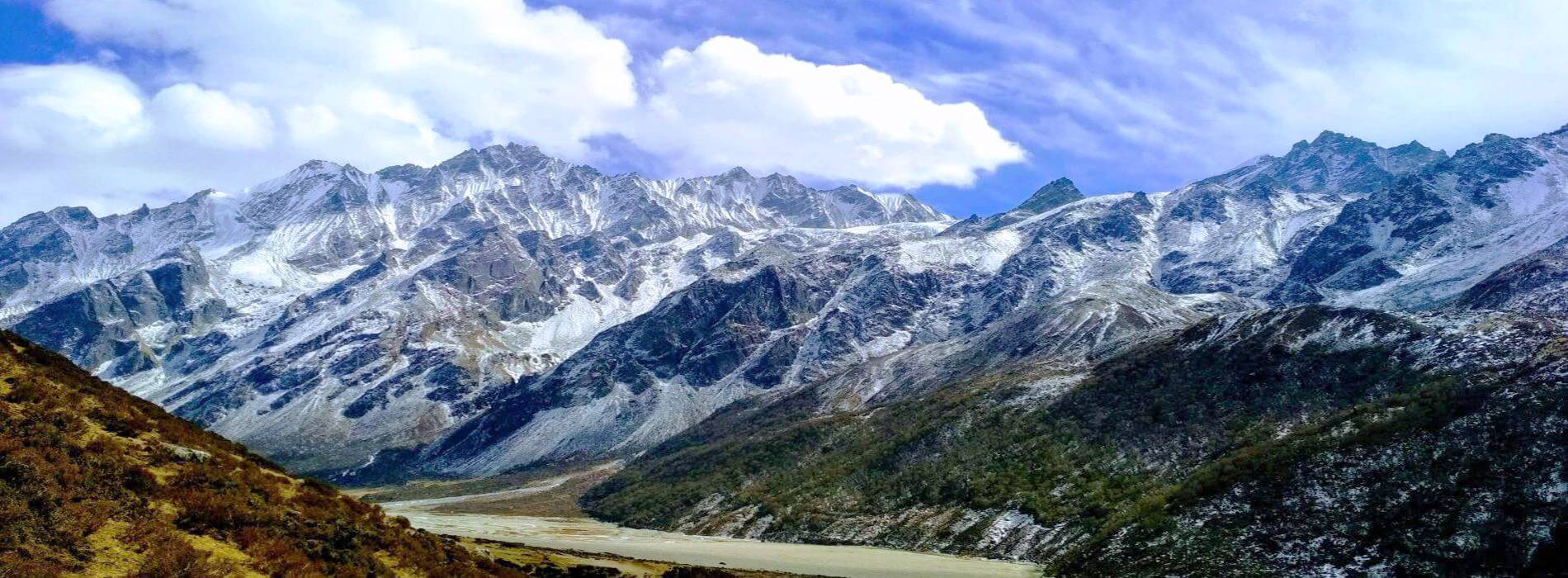
LANGTANG VALLEY TREK
A visit to Langtang National Park, Nepal’s first Himalayan national park- formed in 1976, is a wonderland of natural beauty and rich Tamang culture and only a hop-step and jump from Kathmandu!The Lang...
Overview of Langtang Valley Trek
The Langtang Valley Trek, located within Langtang National Park, is renowned for its diverse flora and fauna, breathtaking mountain vistas, and varied landscapes. Spanning approximately 70 kilometers, the trek usually takes 10 to 12 days to complete. Starting from Syabru Besi and leading up to Kyanjin Gompa, this trek offers an immersive experience in both nature and culture, passing through warm and welcoming Tamang and Sherpa villages.
One of the unique features of this trek is the chance to explore glaciers and icy crevasses, earning it the nickname ‘Valley of Glaciers’. Its proximity to Kathmandu makes it a great option for those with limited time.
Weather and Climate in Langtang Valley
Nepal’s diverse geography results in distinct seasonal patterns that impact trekking conditions. The Langtang Valley Trek is best enjoyed during specific seasons, each offering a different experience.
- Spring (March – May): Spring is characterized by pleasant weather with occasional rain showers. The temperatures range from 10°C to 25°C (50°F to 77°F), making it ideal for moderate trekking. Trails are mostly dry, though some mud may be present at higher altitudes. Spring also brings blooming wildflowers, adding a splash of color to your journey.
- Monsoon (June – August): During the monsoon season, temperatures range from 15°C to 30°C (59°F to 86°F). The weather is warm with clear mornings and afternoon rain showers. The lush green landscape is a highlight, but trails can be slippery and muddy, and leeches and bugs are more common. Rivers may also be swollen.
- Autumn (September – November): Autumn is widely considered the best time for the Langtang Valley Trek. The temperatures vary from 5°C to 20°C (41°F to 68°F), offering clear skies and comfortable walking conditions. The fall foliage is stunning, and the trails are dry and pleasant. This season is less crowded compared to summer, enhancing the trekking experience.
- Winter (December – February): Winter brings the coldest temperatures, ranging from -5°C to 10°C (23°F to 50°F). Snowfall is possible at higher altitudes, making trails icy and challenging. Proper winter gear is essential, and some tea houses at higher elevations may be closed. Winter trekking is not recommended for beginners due to the harsh conditions.
Choosing the Best Time
Selecting the best time for the Langtang Valley Trek depends on your preferences for weather, trail conditions, and crowd levels. Whether you prefer the vibrant blooms of spring, the crisp clarity of autumn, or the serene solitude of winter, each season offers a unique and memorable experience.
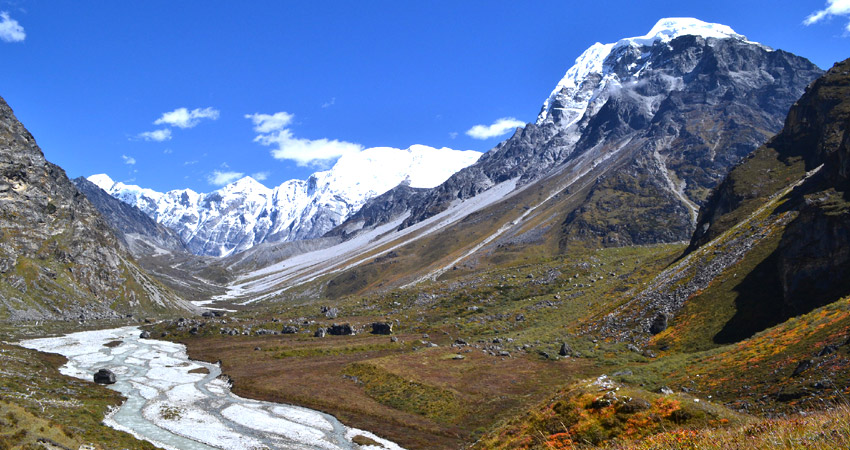
LANGTANG GOSAINKUNDA LAKE TREK
The Langtang Gosainkunda Lake (4380m) Trek takes you to alpine regions that will blow your mind! In a short trip from Kathmandu, you will find yourself in a pristine countryside in Nepal’s first...
Best Seasons for Langtang Valley Trek
When planning a trek to Langtang Valley, the choice of season can greatly influence your experience. Among Nepal’s four distinct seasons, Spring and Autumn stand out as the prime times for this adventure. Each season brings its own unique charm, but Spring and Autumn are particularly favored by trekkers for their optimal conditions.
Trekking to Langtang Valley in Spring (March to May)
Spring, from March to May, transforms Langtang Valley into a vibrant tapestry of colors. This season is characterized by clear azure skies, moderate temperatures, and minimal rainfall. Daytime temperatures typically range between 10°C to 20°C (50°F to 68°F), making for pleasant trekking conditions. In the lower regions, the landscape bursts into a spectacular display of blooming rhododendrons and wildflowers, providing excellent opportunities for photography.
Wildlife is also quite active during Spring, with more chances to spot exotic animals and observe colorful birds. The stable weather and well-maintained trails make Spring an ideal time for trekking. However, be prepared for occasional pre-monsoon showers and increased crowds, as many trekkers choose this season for their adventure.
Langtang Valley Trek During Autumn (September to November)
Autumn, spanning from September to November, is another excellent time to trek in Langtang Valley. This season often surpasses Spring in popularity due to its perfect climatic conditions. Autumn features cool mornings that give way to comfortable afternoons and chilly evenings. The temperature typically ranges from 10°C to 15°C (50°F to 59°F) during the day, with colder temperatures at higher altitudes.
The post-monsoon clarity ensures stunning views of the Himalayas, often blanketed in snow as winter approaches. The crisp air and clear skies make for ideal photography conditions. The landscapes are painted with vibrant autumn foliage, and the region's diverse flora and fauna are highly active.
Autumn also offers a chance to immerse yourself in local culture and partake in Nepal’s major festivals, such as Dashain and Tihar, adding a festive touch to your trekking experience.
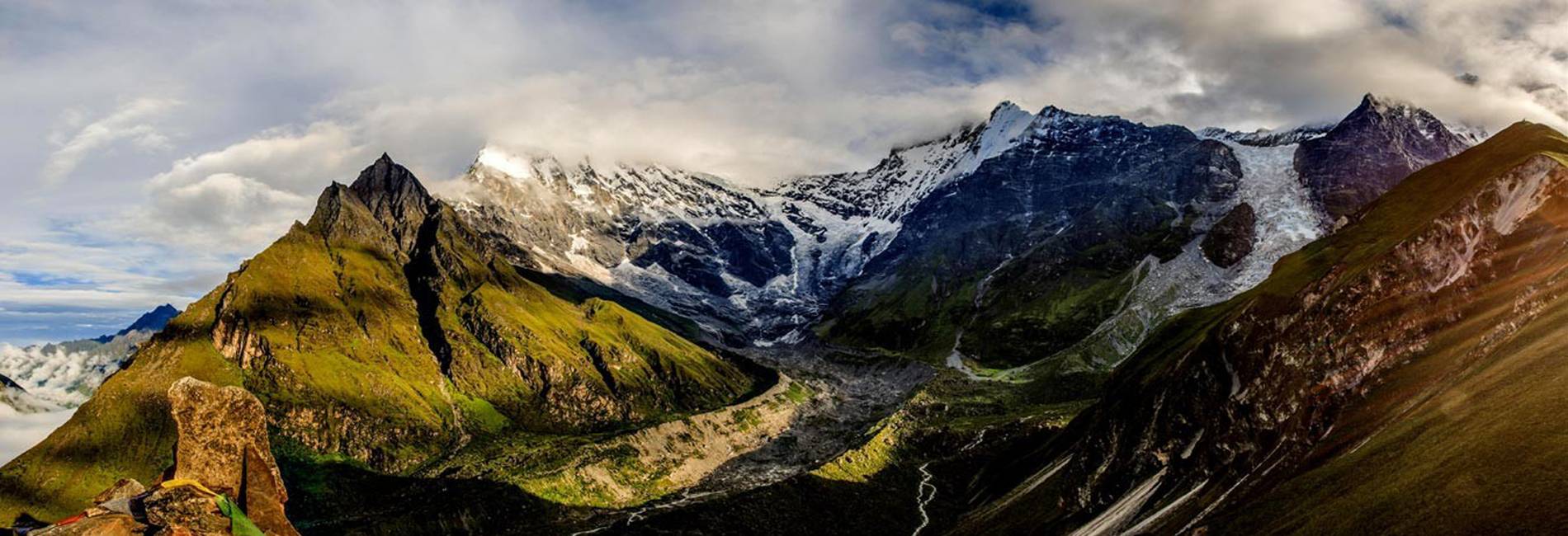
TAMANG HERITAGE TREK
LET THIS BE YOUR AWAKENING AND INTRODUCTION TO TIBETAN BUDDHISM.This is a spiritual journey into the heart of the Tibetan Buddhist region in the Langtang Valley on the Tibetan border. This maybe your...
Whether you choose Spring or Autumn for your Langtang Valley Trek, you’re in for an unforgettable journey. Both seasons offer favorable weather, stunning landscapes, and rich cultural experiences. Select the season that best aligns with your preferences and prepare for a remarkable adventure in one of Nepal's most enchanting regions.
Off-Season Trekking in Langtang Valley
While the Langtang Valley Trek is accessible throughout the year, certain seasons present more challenges than advantages. The monsoon and winter seasons are considered off-peak for trekking in Langtang Valley, each posing unique obstacles.
Trekking Langtang Valley in Monsoon (June to August)
From June to August, the Langtang Valley is enveloped by the monsoon season. This period brings frequent rain showers and high humidity levels. The landscape transforms into a lush, green paradise, with vibrant flora, cascading waterfalls, and swiftly flowing rivers, adding to the region's natural allure.
However, trekking during the monsoon comes with several challenges:
- Slippery Trails: The trails become muddy and treacherous due to the constant rainfall, increasing the risk of slips and falls. Navigating the rugged terrain can become particularly hazardous.
- Leeches and Insects: The wet conditions encourage the presence of leeches and other insects, which can cause discomfort and pose health risks.
- Unpredictable Weather: Frequent rain can disrupt trekking plans, necessitating occasional breaks for shelter. Heavy rainfall may lead to landslides or flooding, potentially blocking trails and causing significant delays or cancellations.
- Obstructed Views: The constant cloud cover and rain often obscure the majestic Himalayan views, which are a major highlight of the trek.
Despite these challenges, trekking Langtang Valley during the monsoon has its advantages:
- Fewer Crowds: The trails are much less crowded, offering a more tranquil and solitary experience. You can enjoy the serenity of the valley with minimal disturbance from other trekkers.
- Enhanced Natural Beauty: The lush greenery and vibrant flora during monsoon create a stunning, almost magical landscape that’s less visible during drier seasons.
For experienced trekkers who are well-prepared and comfortable with the conditions, monsoon trekking can offer a unique adventure. Proper gear, such as waterproof clothing and sturdy footwear, along with careful planning, can help manage the challenges of this off-season trek.
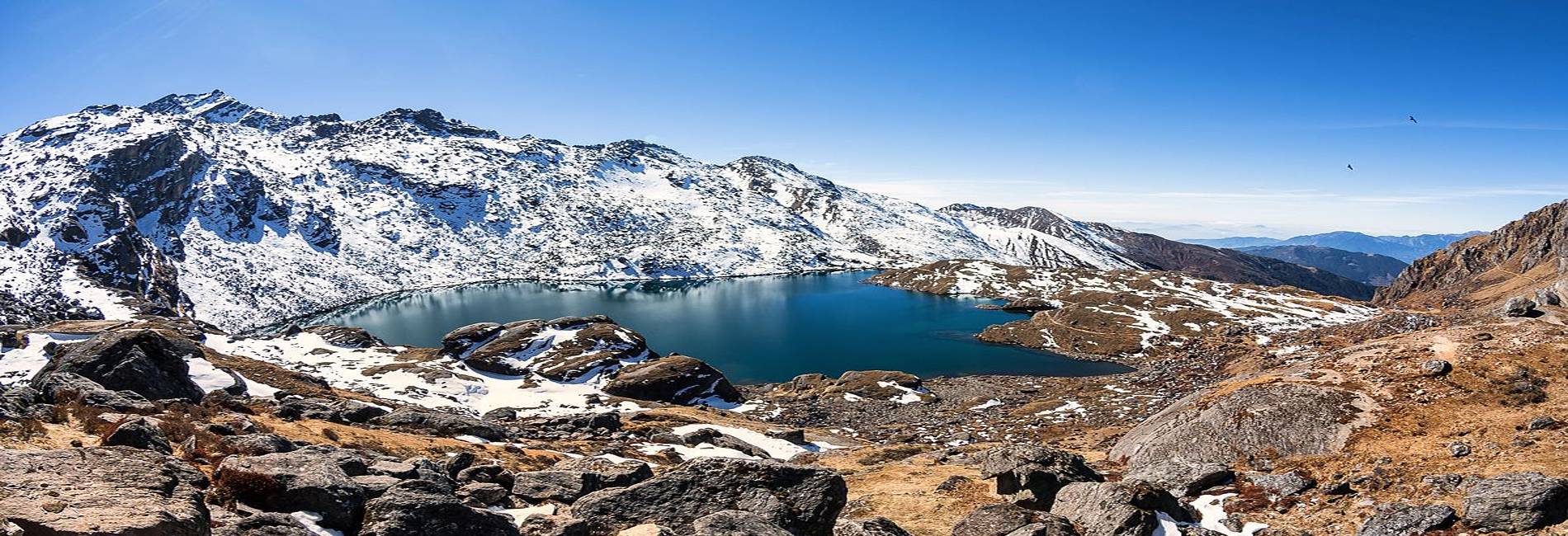
GOSAINKUNDA LAKE TREK
Bath in the pristine clear “holy” water of Gosainkunda Lake, a religious site and abode of Hindu deities Shiva and Gauri. This is a short trek in the much less crowded and quiet Langtang Region o...
Preparation Tips for Monsoon Trekking:
- Gear Up: Invest in high-quality waterproof gear, including a rain jacket, pants, and waterproof covers for your backpack and boots.
- Health Precautions: Be cautious of leeches and insects; carry insect repellent and check your body regularly.
- Trail Information: Stay updated on trail conditions and weather forecasts. Flexibility in your itinerary will help manage potential delays or disruptions.
Embarking on the Langtang Valley Trek during the monsoon season requires careful consideration and preparation. If you’re up for the challenge, it can be a rewarding experience with unique natural beauty and a quieter, more personal adventure.
Langtang Valley Trek in Winter (December to February)
The winter months from December to February bring a dramatic transformation to the Langtang Valley. This period converts the landscape into a picturesque winter wonderland, with snow-covered trails and majestic peaks blanketed in white.
Winter Beauty and Challenges:
- Snow-Covered Trails: The trails and high-altitude passes are often covered in snow, providing stunning backdrops for photographs and a serene, magical atmosphere. The snow adds a layer of beauty to the glacial scenery, creating a stark contrast against the icy layers.
- Extreme Temperatures: Winter in Langtang Valley brings extremely cold temperatures, especially at higher altitudes. Daytime temperatures can range from –5°C to –10°C (23°F to 14°F), with nighttime temperatures dropping even further. This can be challenging for those unaccustomed to such cold conditions and may require additional gear and preparation to stay warm and safe.
- Navigational Difficulties: Trekking in snow-covered terrain can be daunting, particularly for those without prior winter trekking experience. Snow can obscure trails and make navigation more difficult, increasing the risk of getting lost or encountering hazards.
- Reduced Facilities: Due to the off-season nature, some teahouses and lodges, particularly in high-altitude areas, may be closed. This reduces accommodation options and might require extra planning to ensure you have adequate lodging and supplies.
Advantages of Winter Trekking:
- Minimal Crowds: Winter sees a significant drop in the number of trekkers, allowing for a more peaceful and intimate experience with nature. The reduced crowd size offers solitude and tranquility, making the trek feel more personal.
- Affordable Options: With fewer trekkers, accommodation and trekking packages can be more affordable. The lack of demand often leads to lower prices for lodging and services.
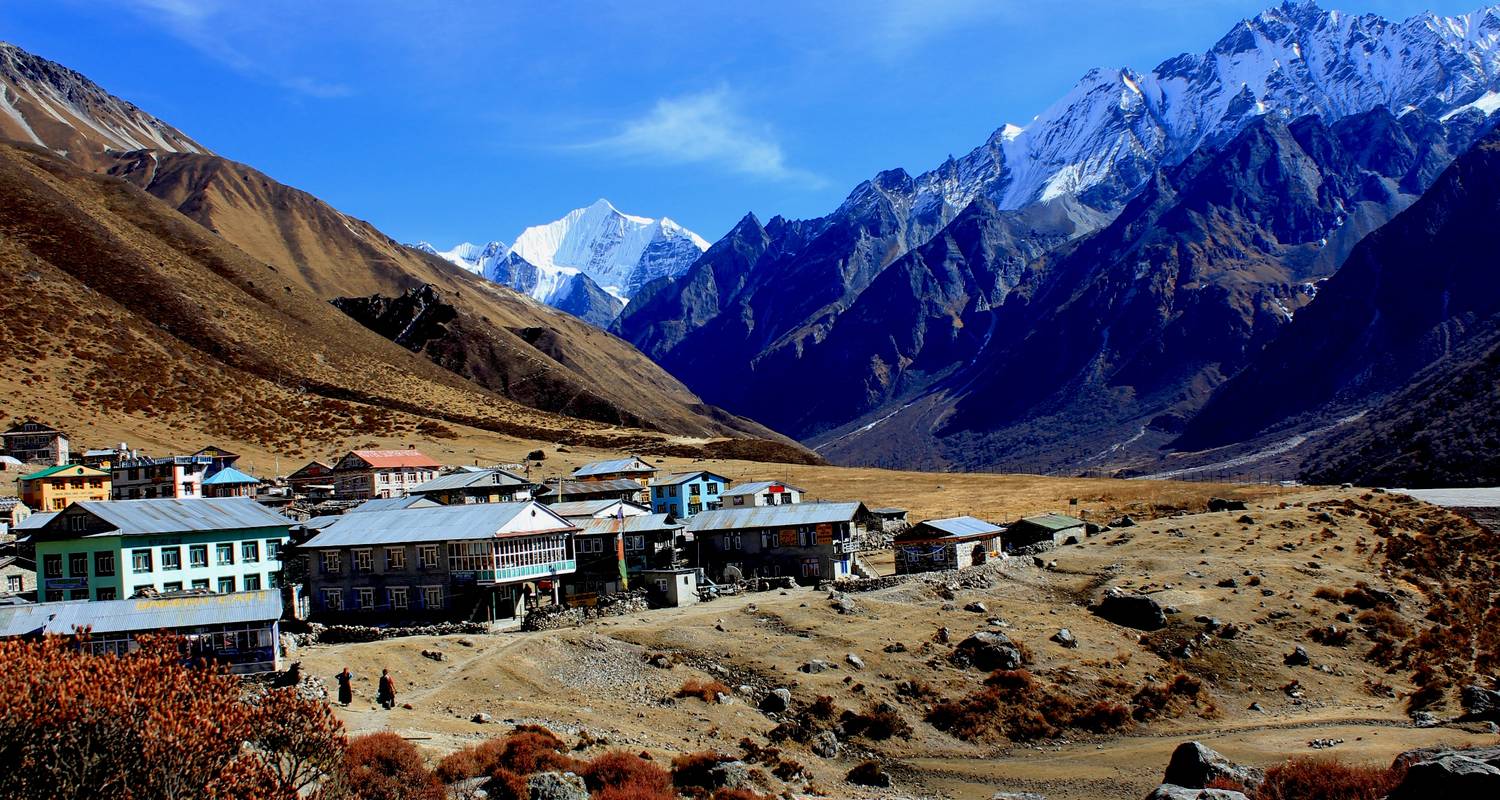
LANGTANG VALLEY TREK 7 DAYS
The Langtang valley, located 61.8 km far from Kathmandu, amazing travelers with its Himalayan streams and magnificent views. Mt. Langtang Lirung (7246 meters) surrounds the colorful rhododendron,...
Preparation Tips for Winter Trekking:
- Dress Appropriately: Equip yourself with high-quality winter gear, including insulated clothing, thermal layers, and sturdy, waterproof boots. Proper winter gear is essential to manage the extreme cold.
- Stay Informed: Keep up-to-date with weather conditions and trail information. Be prepared for sudden weather changes and potential delays or route alterations due to snow.
- Pack Smart: Ensure your packing list includes essential winter items such as a sleeping bag rated for low temperatures, crampons or microspikes for traction, and a reliable source of warmth.
Tips for Choosing the Best Time for Langtang Valley Trek:
When selecting the best time for your Langtang Valley Trek, consider the following factors beyond just weather conditions:
- Personal Preferences: Determine whether you prefer the vibrant landscapes of spring and autumn or the serene, snowy beauty of winter.
- Crowd Tolerance: If you seek solitude, the off-peak seasons might be more appealing, while peak seasons offer a more social trekking environment.
- Health and Fitness: Assess your ability to handle extreme weather conditions and challenging trail conditions. Ensure you're prepared for the physical demands of the trek.
By weighing these factors and understanding what each season has to offer, you can make an informed decision and choose the best time for your Langtang Valley adventure.
Choosing the Best Time for Your Langtang Valley Trek: Personal Preferences, Crowd Tolerance, and Physical Fitness
Personal Preferences:
Selecting the ideal season for your Langtang Valley trek hinges on what you hope to gain from the adventure:
- Cultural Experiences: If immersing yourself in the rich cultural heritage of Nepal appeals to you, autumn (September to November) is an excellent choice. This season coincides with major Nepali festivals like Dashain and Tihar, providing a unique opportunity to experience vibrant local traditions and celebrations.
- Snowy Landscapes: For those who dream of trekking through a snow-covered paradise, winter (December to February) offers a breathtaking yet challenging experience. Snow-capped peaks and serene winter landscapes make for a dramatic and memorable trek, provided you're prepared for extreme cold and snow-covered trails.
- Wildlife Encounters: If observing wildlife is a priority, spring (March to May) is the ideal time. The season brings blooming wildflowers and active wildlife, offering excellent opportunities to spot exotic animals and enjoy vibrant flora.
- Unique Adventure: For trekkers seeking an off-the-beaten-path experience, the monsoon season (June to August) provides a lush, green landscape and fewer crowds. However, be ready for slippery trails and potential rain-related challenges.
Crowd Tolerance:
Your comfort with crowds can significantly influence your trekking experience:
- High Crowds: If you enjoy the camaraderie of fellow trekkers and don’t mind sharing the trail, spring and autumn are bustling with trekkers. These peak seasons offer social interactions and the opportunity to meet like-minded adventurers.
- Solitude: If you prefer a more tranquil experience and want to avoid large groups, winter and monsoon seasons are more suitable. During these times, you'll encounter fewer trekkers, allowing for a more peaceful and solitary journey through the Langtang Valley.
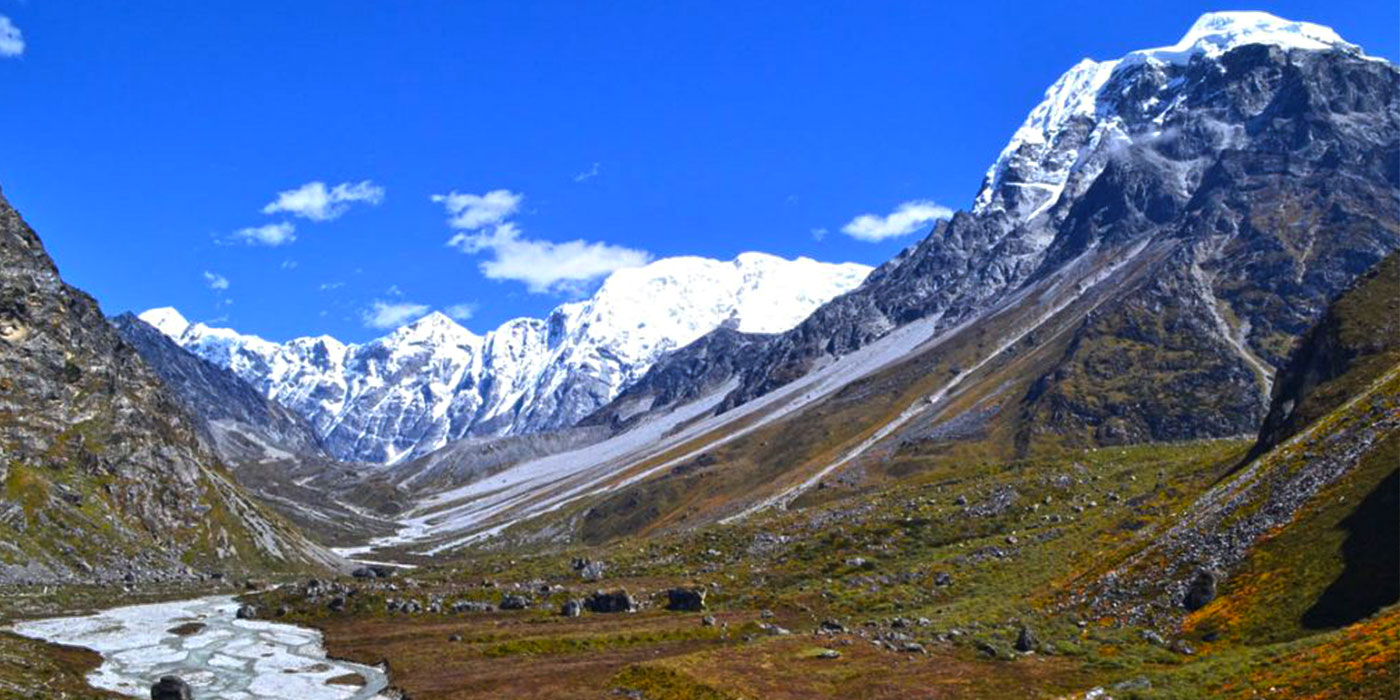
LANGTANG VALLEY TREK 8 DAYS
Langtang National Park is a land of unspoiled beauty, becoming Nepal’s first Himalayan national park in 1976. It is also home to the Tibetan Buddhist Tamang people and is a stone’s throw from Kat...
Physical Fitness and Prior Experience:
The trek's difficulty level and your physical preparedness play a crucial role in determining the best season:
- Physical Fitness: Regardless of the season, a good level of physical fitness is essential. For those who are relatively fit, spring and autumn provide favorable conditions for trekking. If you are considering trekking during the more challenging winter or monsoon seasons, ensure you have a higher level of fitness to handle the additional difficulties.
- Prior Experience: While Langtang Valley is suitable for beginners, having prior trekking experience can be advantageous, especially during off-seasons. Experienced trekkers will better manage the challenges of snow and slippery trails in winter and monsoon. Beginners might find spring and autumn more accommodating, but with adequate preparation, off-season treks can also be manageable.
By considering these factors—personal preferences, crowd tolerance, and physical fitness—you can select the best time for your Langtang Valley adventure, ensuring a trek that aligns with your goals and expectations.

HELAMBU TREK
Big on beauty for those short on time!The Helambu region is a short trek about 72 km from Kathmandu and offers trekkers so much in such a short space of time. The word Helambu derives from the w...
Any Questions? Let Us Know.
Recent Posts
17th June, 2025


















